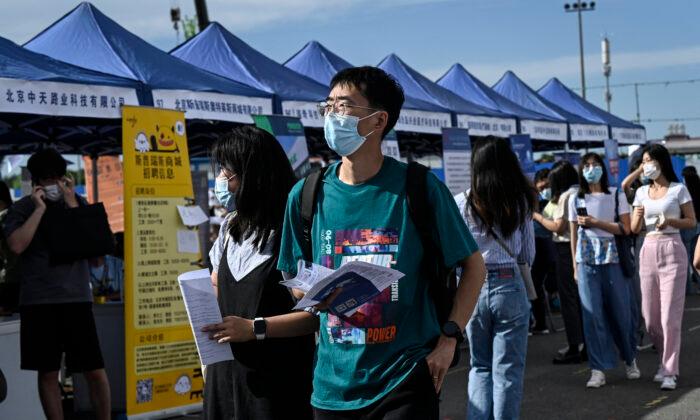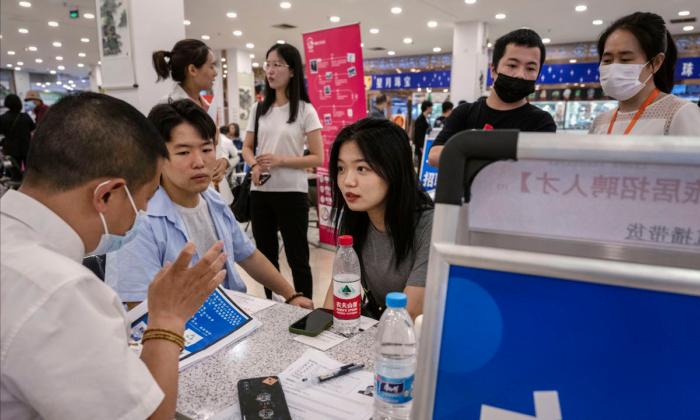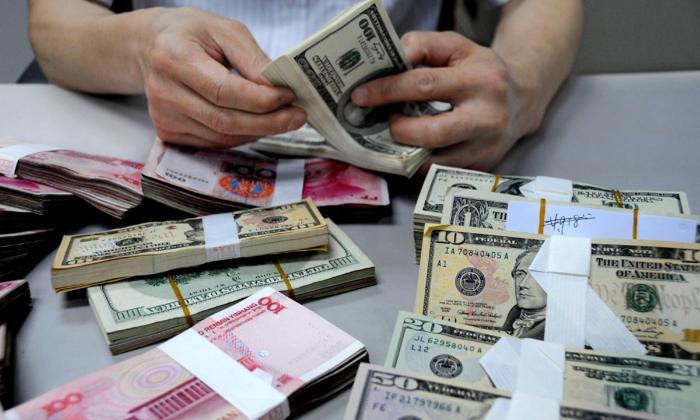Employment prospects are dim for China’s college graduates amid an economic slowdown.
While the number of graduates entering the job market has significantly increased, small- and medium-sized enterprises—the primary employers of new graduates—have suffered mass closures due to the Chinese Communist Party’s (CCP) three-year “zero-COVID” policy. Consequently, graduates are under unprecedented pressure to find work.
On May 11, Ding Xuexiang, vice premier of the State Council, spoke during a telephone conference on employment and entrepreneurship for new college graduates. Given the dismal state of China’s job market, he urged lawmakers to implement stable employment policies to assist recent graduates struggling to find jobs.
At Beihang University (BUAA, a research university of Aeronautics and Astronautics), 35.8 percent of graduates with a bachelor’s degree entered private enterprises, while 28.4 percent joined SOEs. Among the graduates with advanced degrees, 36.4 percent joined private companies, surpassing the proportion (22.5 percent) that entered SOEs.
At Northeastern University, 43.5 percent of graduates with a bachelor’s degree entered private enterprises, while 40.1 percent found employment in SOEs.
At the University of International Business and Economics, half of the graduates with a bachelor’s degree joined private enterprises.
Grim Outlook for Chinese Firms
However, the situation for private enterprises is not optimistic this year.Although CCP officials have been touting the beginning of China’s economic recovery, their April reports acknowledged the challenges that small- and medium-sized enterprises face, such as low consumer demand, tight cash flow, and pressure to change business practices to adapt to market conditions.
According to the South China Morning Post, statistics show that in the first 11 months of 2021, approximately 4.37 million small- and medium-sized enterprises in China permanently closed, more than three times the number of new businesses that opened during the same period. The number of small- and medium-sized firms that deregistered in 2020 reached a historical high of 4.45 million, almost twice as many as in 2019 and about 10 times more than in 2018.
Financing is difficult, Meng said. Restarting operations after a factory shutdown requires capital. However, obtaining loans in China has always been challenging for small- and medium-sized enterprises. They usually seek loans from smaller banks with higher interest rates to secure funds. State-owned banks don’t usually lend to small- and medium-sized firms but typically provide loans to SOEs. As a result, China’s small- and medium-sized enterprises have been struggling after the pandemic.
Meng said that after the Chinese New Year, many of his friends in the industrial park asked each other if their businesses had resumed operations. The response was that they hadn’t because there were no orders.
Meng also shared his arduous journey of running a private enterprise in China. Due to pandemic lockdowns and draconian measures, his company, with a revenue of 300 million yuan (about $43.47 million), went bankrupt.
Meng stated that his latex product export business had its heyday in 2017 and 2018 when there were more orders. However, in early 2020, his factory shut down multiple times. Even if one positive COVID-19 case was reported in the community, the entire region would be completely locked down and subjected to comprehensive nucleic acid testing. By the end of 2021, he felt that reopening his business was no longer worth it, so he closed his operations in Guangxi, Beijing, and Chongqing.
Shi Shan, a China expert and current affairs commentator, told NTD that all three drivers of China’s economy—exports, consumption, and investment—face problems, and the economic situation is truly dire.






